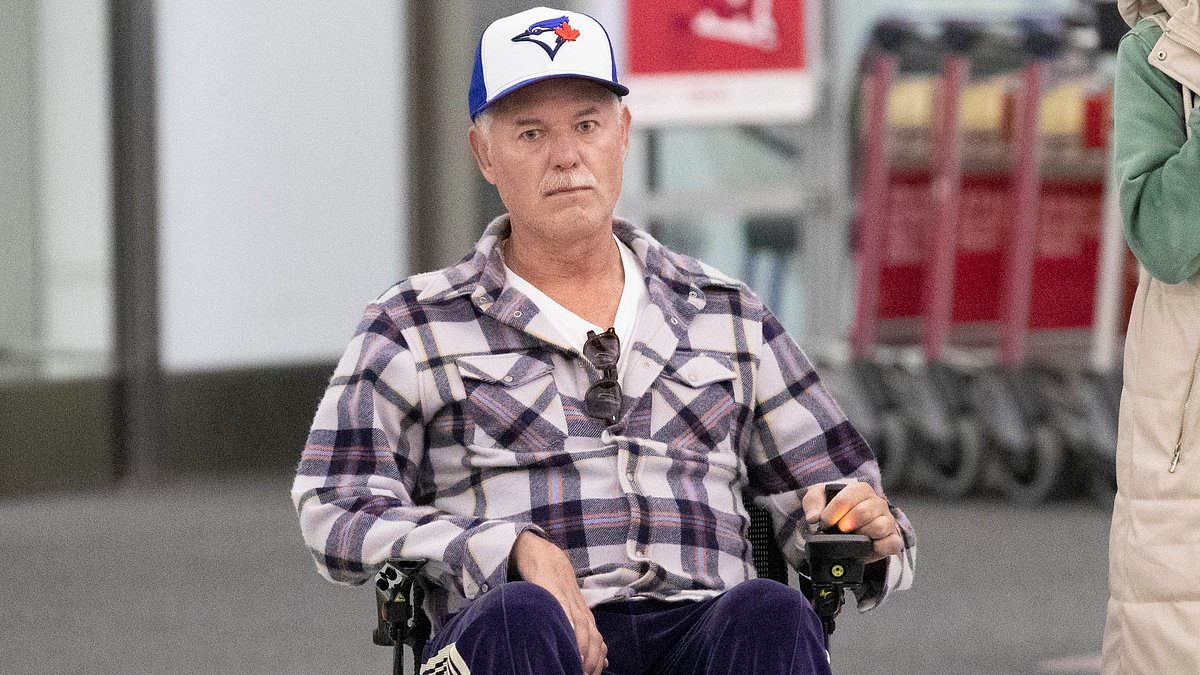Doctors reveal the 'ultimate' drug-free menopause treatment to relieve debilitating symptoms

Published: | Updated:
Over one million American women enter menopause each year, a life stage that plunges them into a world of hot flashes, bone thinning, mood swings, insomnia, urinary incontinence and fatigue.
The most effective treatment for menopause symptoms is hormone replacement therapy (HRT), but fewer than five percent of women take it, mainly due to outdated safety concerns.
Instead, they may try over-the-counter pain relievers, sleeping pills, ice packs or antidepressants and antianxiety medicines.
But physicians and health trainers told the Daily Mail that women can also seek symptom relief through exercise. Staying strong and building muscle are vital, experts added.
They recommend strength training to improve balance and preserve bone density, as well as light cardio workouts, which enhance the body’s ability to thermoregulate and may therefore alleviate hot flashes.
Liz Hilliard, a fitness instructor who helps women avoid the side effects of menopause through a combination of Pilates and strength training, told the Daily Mail: 'Strength training is my number one recommendation for anyone 50 or older.'
‘We begin to lose muscle mass around age 30, which can lead to a whole host of problems from increased body fat and weight gain to sarcopenia or osteoporosis.’
Over one million American women enter menopause each year and may experience hot flashes, bone thinning, mood swings, insomnia, urinary incontinence and fatigue (stock image)
Menopause is a natural life stage for women marked by a significant drop in estrogen.
This hormonal shift disrupts the body's regulation of blood vessels, leading to hot flashes and night sweats. It also causes changes in urinary tissues, which can result in incontinence and urinary tract infections.
Hilliard, who developed the popular Liz Hilliard Method, told the Daily Mail that she is in better shape at 71 than she was at 40.
She said: ‘By incorporating strength training like we do at Hilliard Studio Method, we not only build muscle and strength as we age but improve our bone density and maintain a healthy weight.
‘Strengthening our muscles leads to better balance and support during daily activities and decreases our chance of injury from falls or accidents.’
Colorado-based trainer Saara Haapanen prescribed specific strength-training exercises to counter the menopausal decline muscle mass and bone density, which could lead to osteoporosis.
Osteoporosis affects nearly half of all menopausal women, with one in two expected to suffer a related fracture in their lifetime.
She prescribed a series of resistance exercises to be done two to three times a week that can help combat the risks of fractures, breaks and falls.
Her recommendation focuses on major muscle groups with exercises like a type of squat exercise where the lifter holds a weight such as a dumbbell or kettlebell in front of their chest, as well as rows, step-ups, and glute bridges, using bodyweight, dumbbells or bands.
A key technique is to emphasize slow, controlled movements during the lowering phase of each exercise to build strength safely while protecting more vulnerable tendons.
For joint stiffness, she prescribed daily mobility work and myofascial release, which loosens tissues surrounding muscles and bones, using a foam roller.
Her recommendations included yoga-inspired movements like cat-cow and chest openers, along with exercises that paired gentle mobility with light resistance to maintain tissue elasticity and reduce inflammation.
Liz Hilliard, a fitness instructor specializing in menopausal health, advocates strength training as the most important strategy for those over 50, as reported by the Daily Mail
Hilliard added that the most effective strength training requires challenging muscles beyond their comfort zone.
‘You have to pick up something heavier that you don’t want to pick up. If there was a pill it would be something that made you lift heavy things,’ she said.
This does not have to be complicated, she said.
Women can integrate it into their day by stopping during a walk to do 15 to 20 bodyweight squats or practicing sitting and standing from a chair without using their hands until their muscles are fatigued.
She instructed women to perform a tricep dip by sliding their bottom off the edge of a chair while supporting their weight with their hands. They should engage their core by tucking the belly button toward the spine and lifting the hips slightly.
From this position, she advised bending and then straightening the arms to lower and lift the body. This compound movement was challenging, but doing 10 to 15 daily sculpts the back of the arms, engages the core, and improves mood.
Hillard told the Daily Mail: ‘If there’s a perfect exercise, it is a push-up. It works the core, the full upper body, you get the most bang for your buck in terms of feeling good' (stock)
Savannah Hood, a physical therapist based in Texas, extolled the value of cardiovascular exercise as a means of improving mood and energy.
Cardio, such as a fast walk or a light jog, is one of the key non-pharmacological ways to help manage hot flashes and night sweats.
Hood added that bicycles, a core-strengthening exercise where you lie on your back and alternate bringing your opposite elbow toward your knee in a pedaling motion, ‘Encourages spinal mobility and gentle cardiovascular activation to combat fatigue.’
During menopause, the brain's hypersensitive thermostat overreacts to minor temperature changes, triggering hot flashes.
Regular cardio safely elevates body temperature, training this internal thermostat to become less reactive over time. This reduces both the frequency and intensity of hot flashes.
Strength training also provides cardiovascular benefits. Hillard added: ‘If you have to remember anything to do when you’re turning toward menopause and perimenopause, start doing your workout harder than you did before.
‘If there’s a perfect exercise, it is a push-up. It works the core, the full upper body, you get the most bang for your buck in terms of feeling good, keeping your shoulders strong, reducing the risk of injury, more physical ailments, more soreness.
‘Then the simple movement of the body. Don’t underestimate the mental and emotional impact simply from going on a walk.’
Daily Mail





